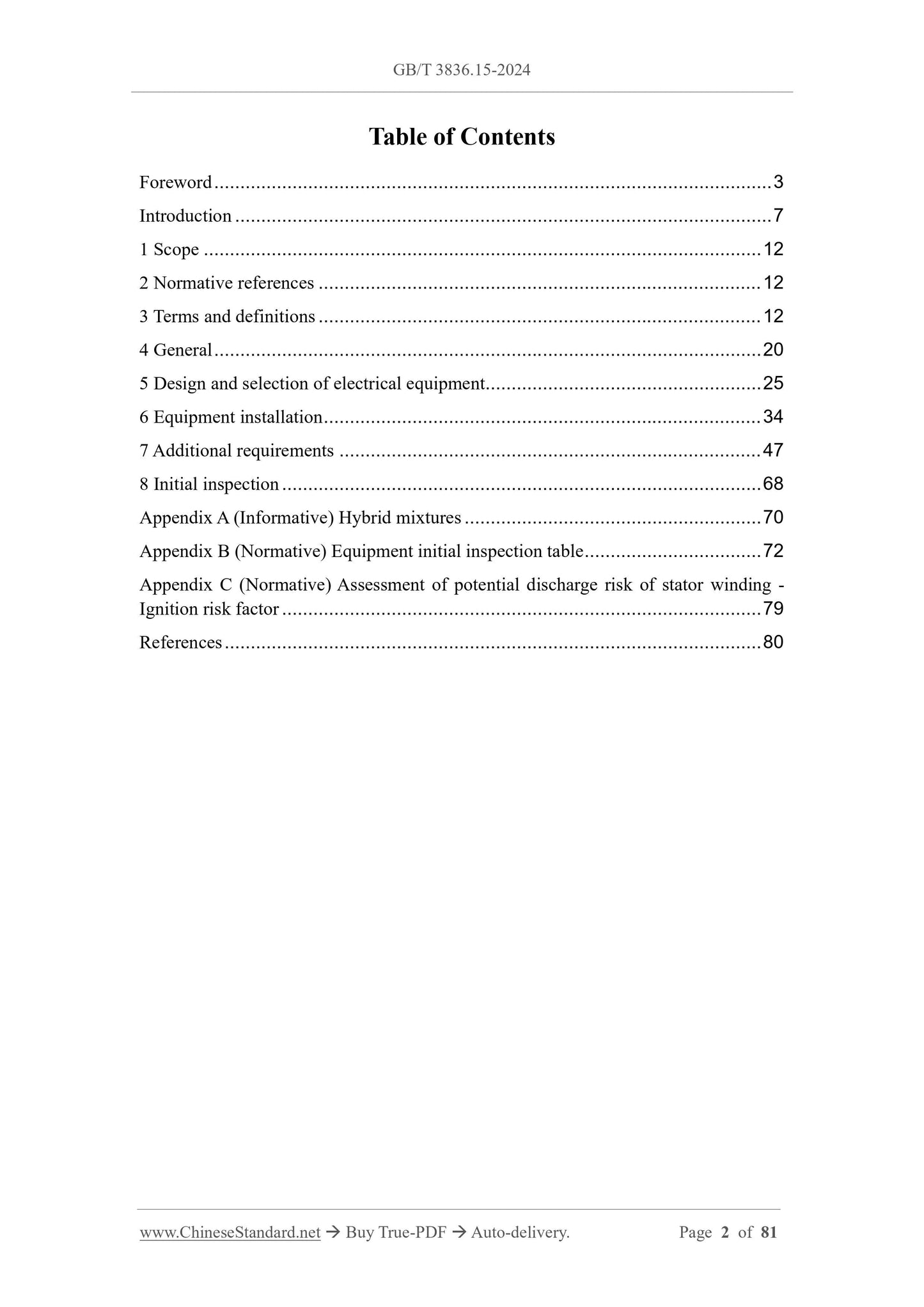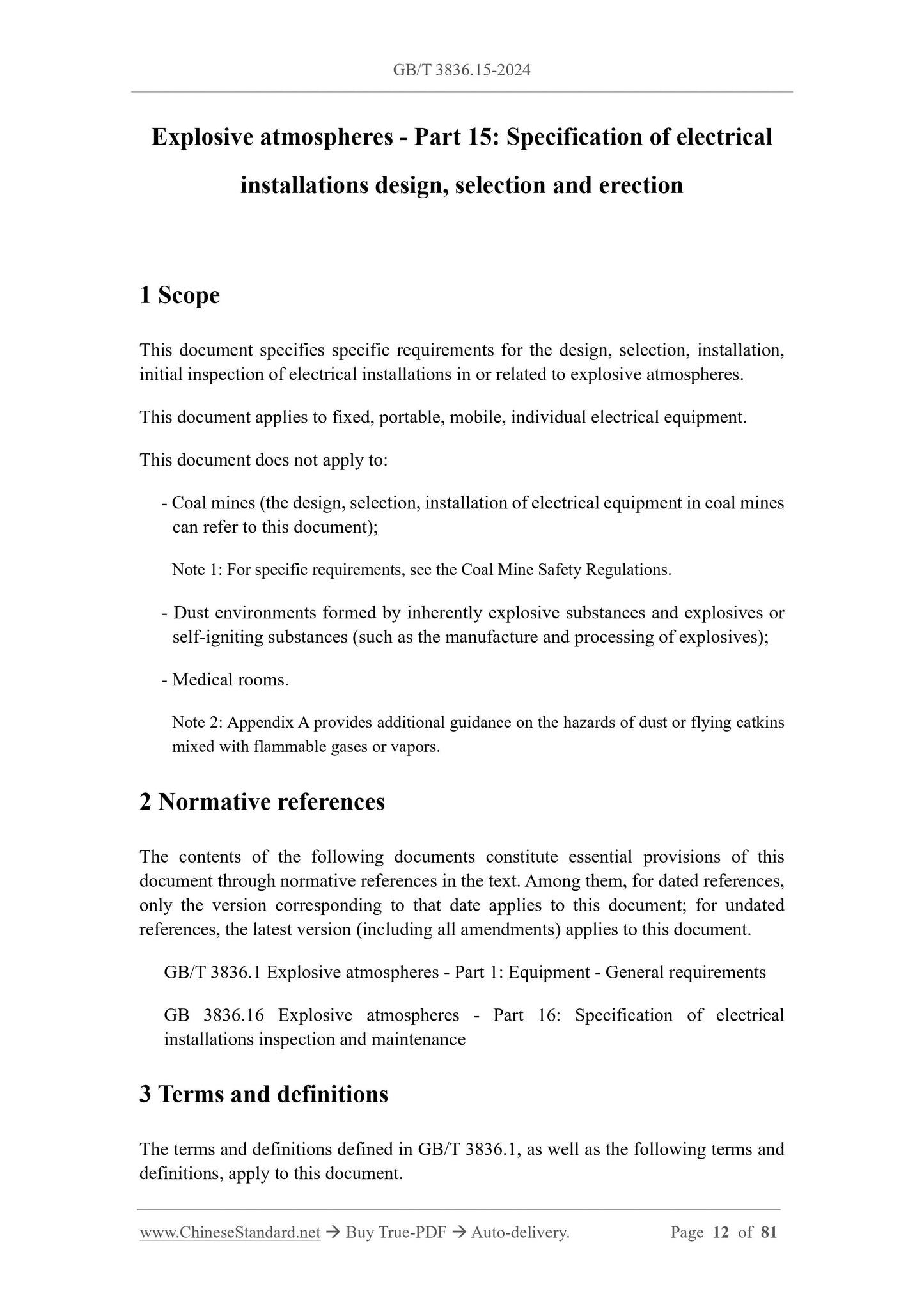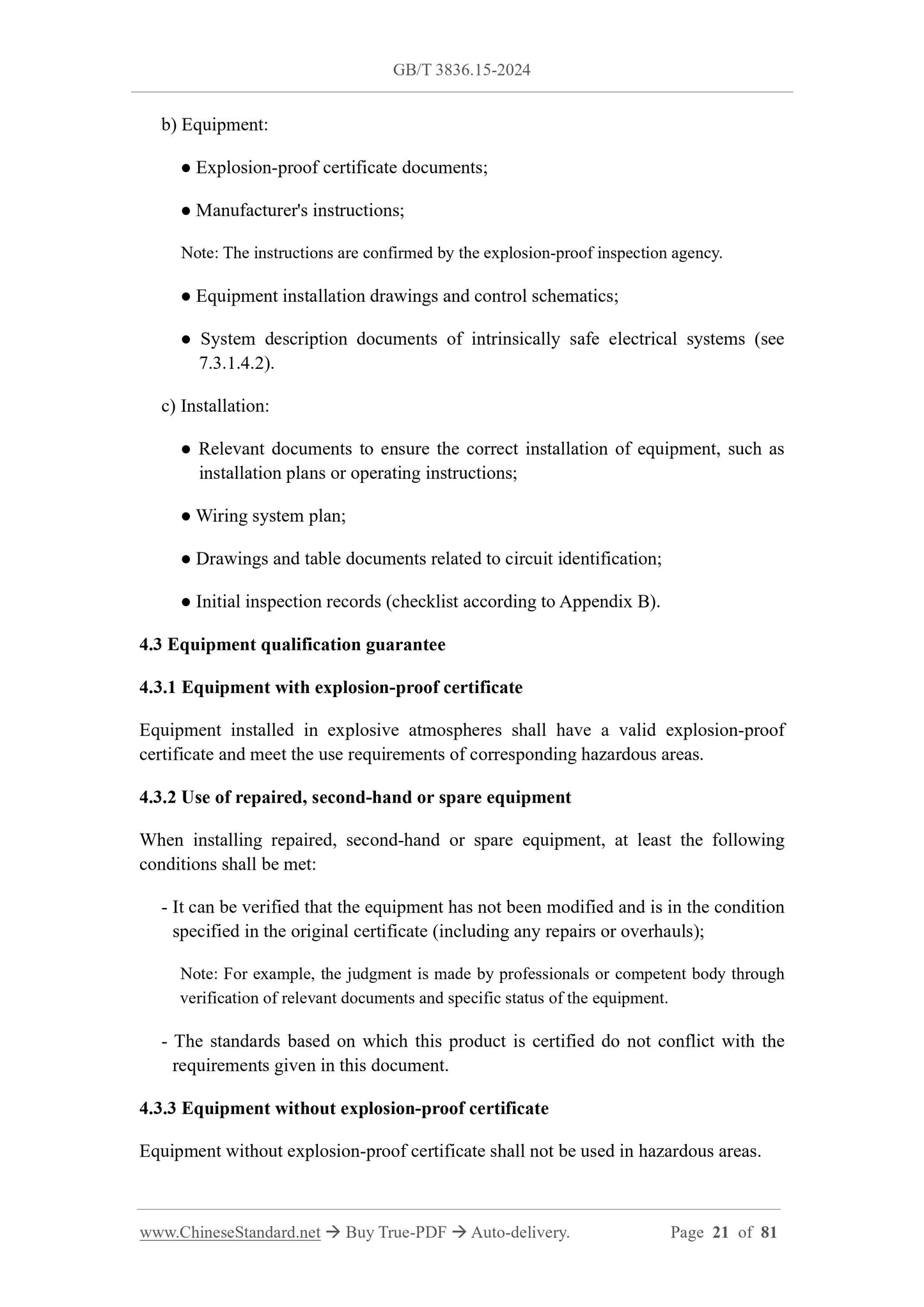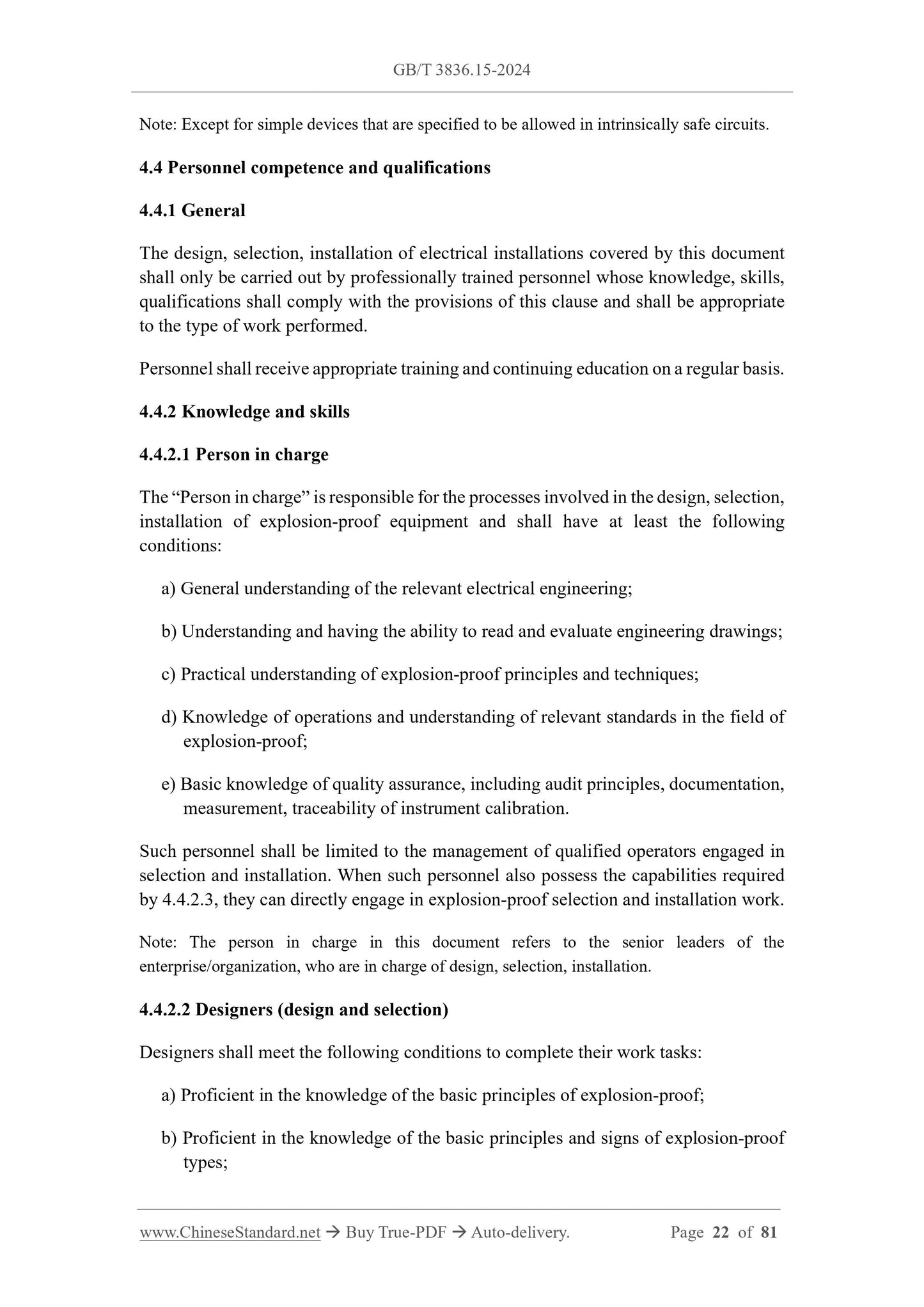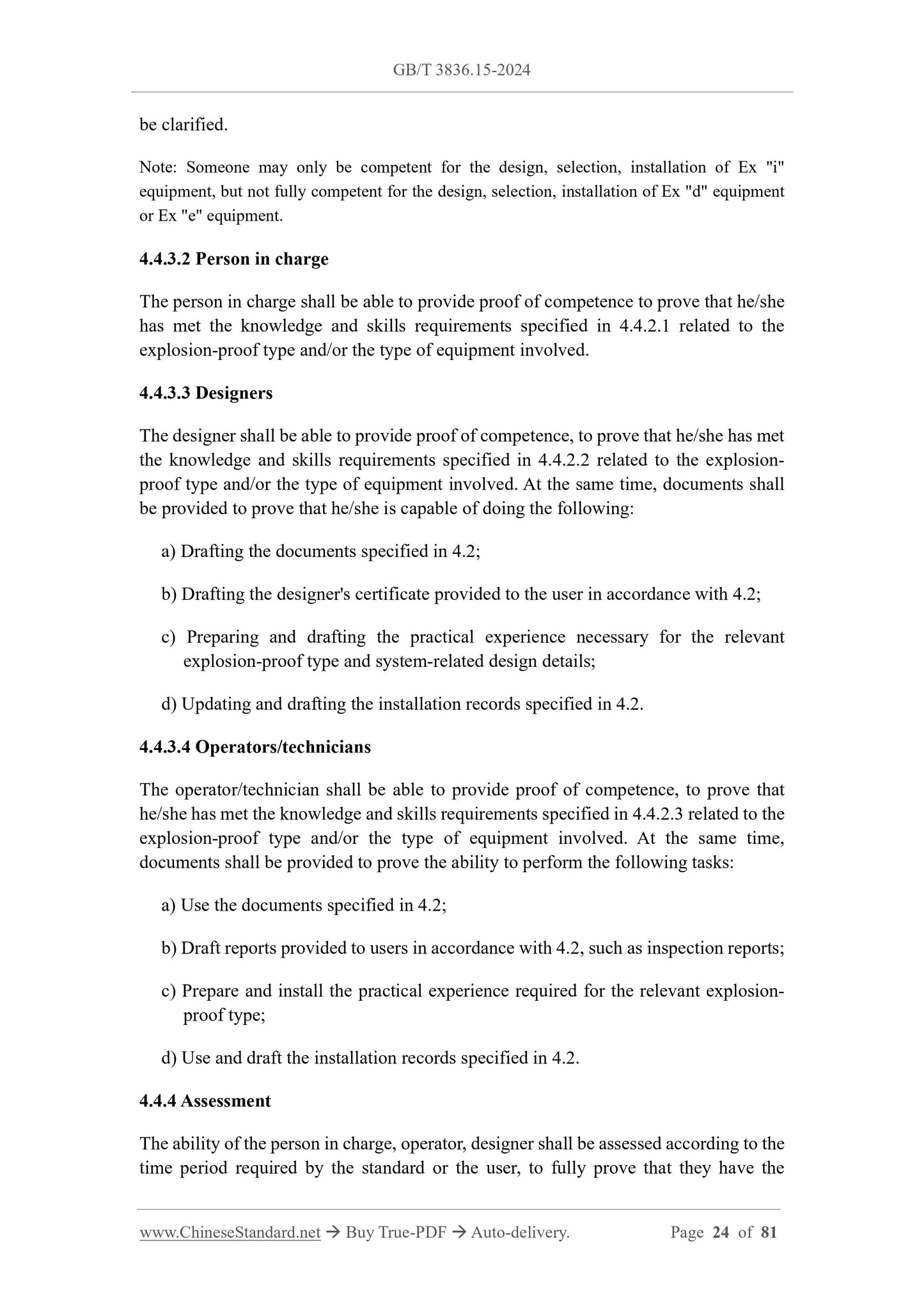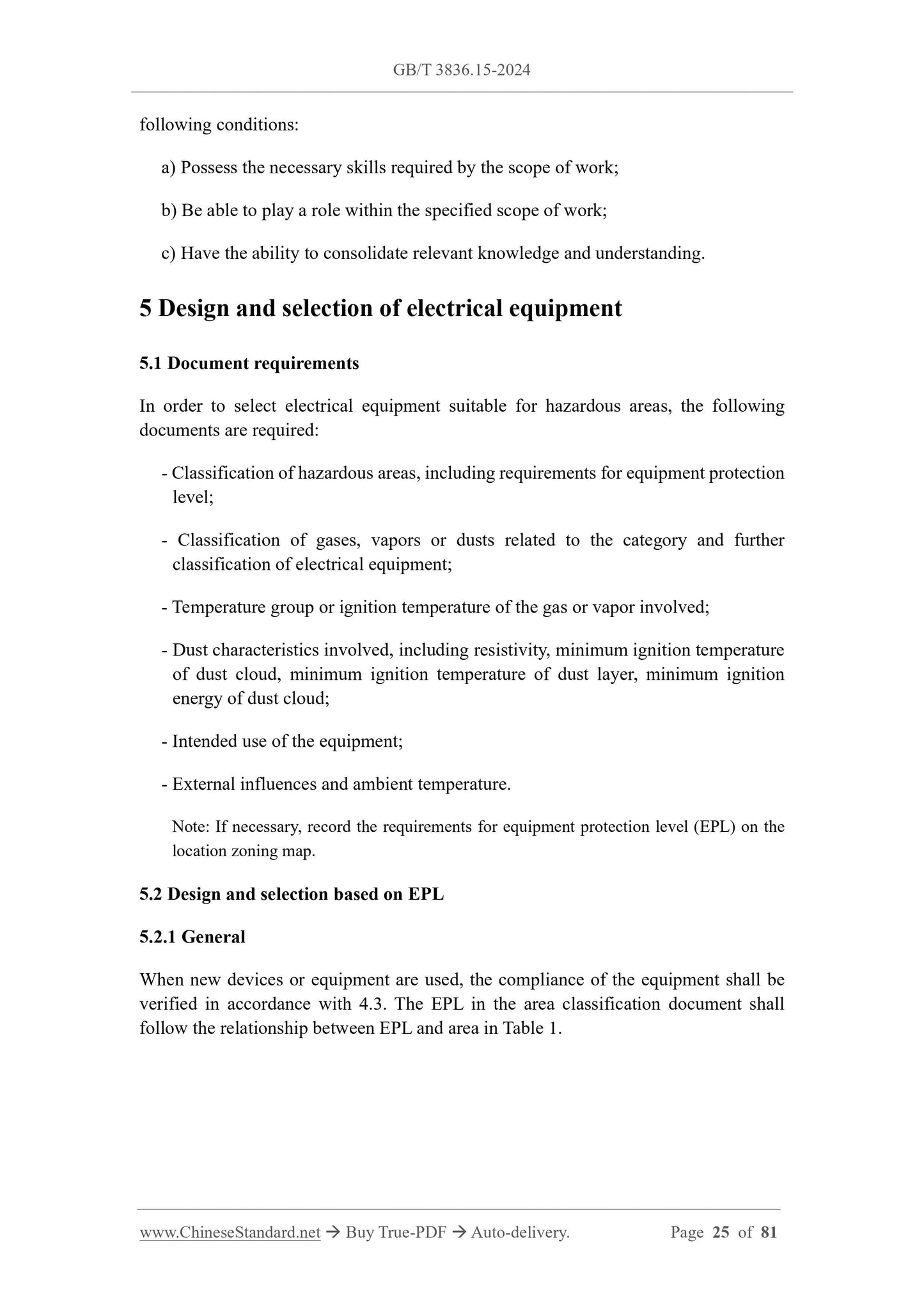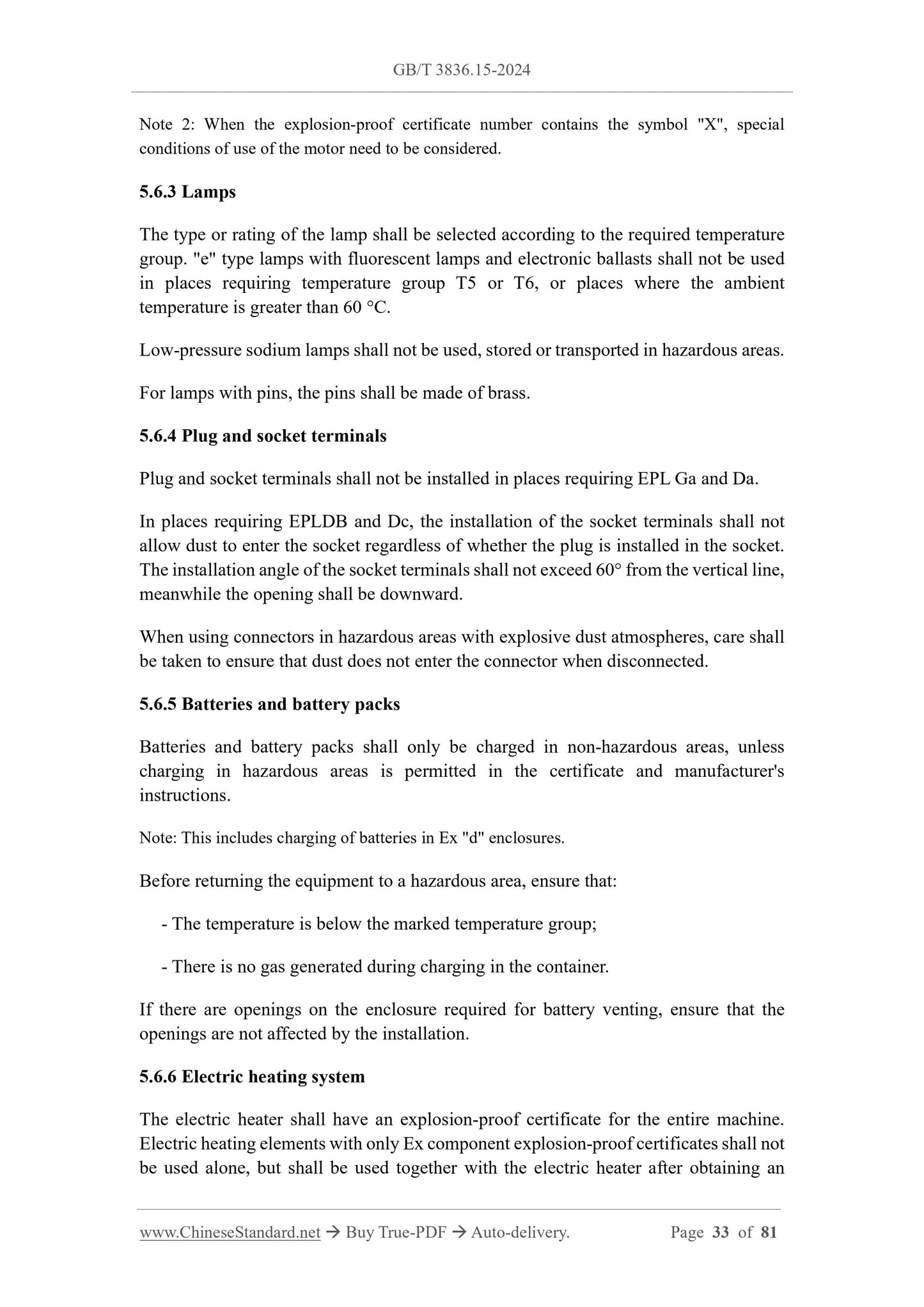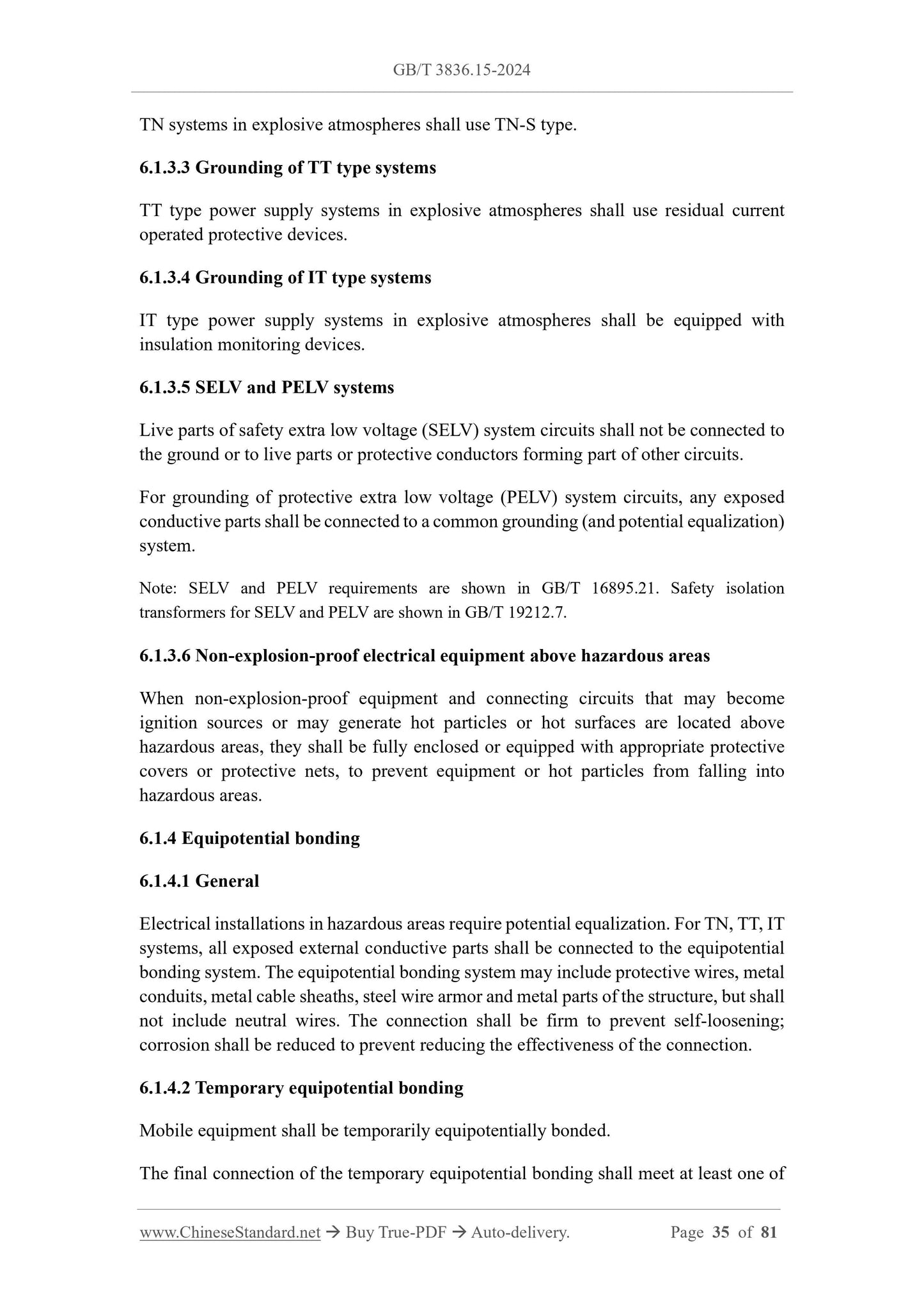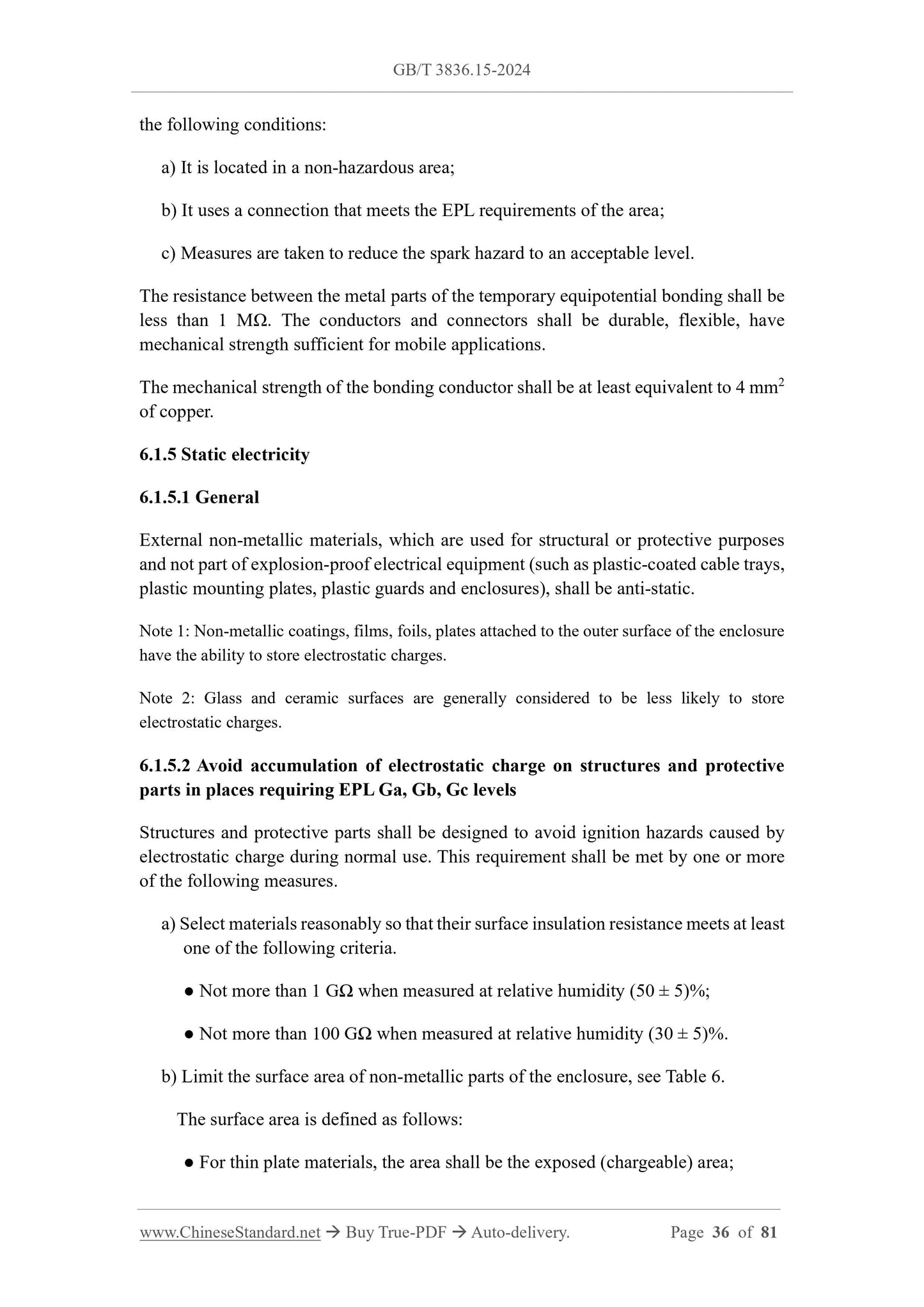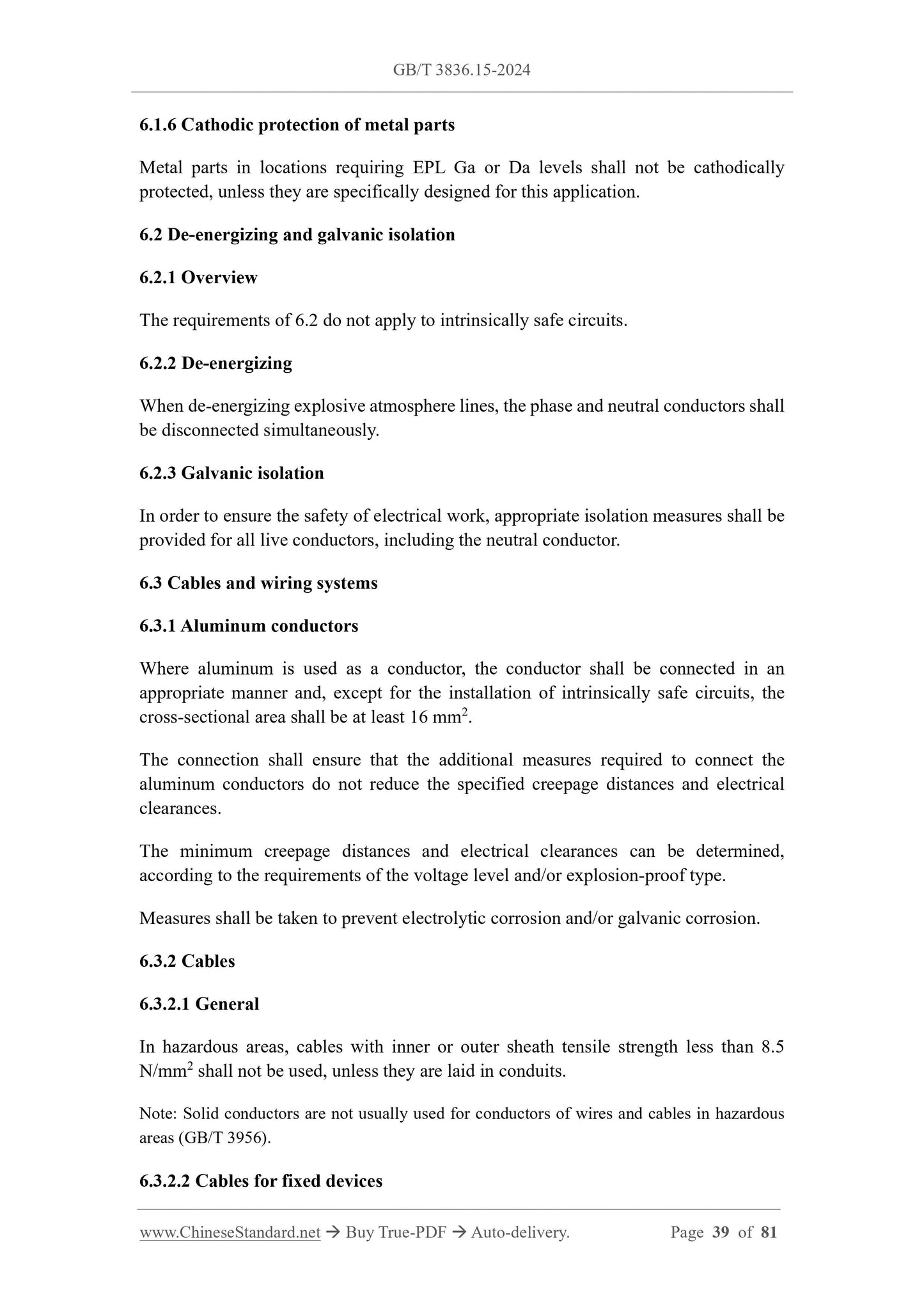1
/
of
12
www.ChineseStandard.us -- Field Test Asia Pte. Ltd.
GB 3836.15-2024 English PDF
GB 3836.15-2024 English PDF
Regular price
$755.00
Regular price
Sale price
$755.00
Unit price
/
per
Shipping calculated at checkout.
Couldn't load pickup availability
GB 3836.15-2024: Explosive atmospheres - Part 15: Specification of electrical installations design, selection and erection
Delivery: 9 seconds. Download (and Email) true-PDF + Invoice.Get Quotation: Click GB 3836.15-2024 (Self-service in 1-minute)
Newer / historical versions: GB 3836.15-2024
Preview True-PDF
Scope
This document specifies specific requirements for the design, selection, installation,initial inspection of electrical installations in or related to explosive atmospheres.
This document applies to fixed, portable, mobile, individual electrical equipment.
This document does not apply to.
- Coal mines (the design, selection, installation of electrical equipment in coal mines
can refer to this document);
Note 1.For specific requirements, see the Coal Mine Safety Regulations.
- Dust environments formed by inherently explosive substances and explosives or
self-igniting substances (such as the manufacture and processing of explosives);
- Medical rooms.
Note 2.Appendix A provides additional guidance on the hazards of dust or flying catkins
mixed with flammable gases or vapors.
Basic Data
| Standard ID | GB 3836.15-2024 (GB3836.15-2024) |
| Description (Translated English) | Explosive atmospheres - Part 15: Specification of electrical installations design, selection and erection |
| Sector / Industry | National Standard |
| Classification of Chinese Standard | K35 |
| Classification of International Standard | 29.260.20 |
| Word Count Estimation | 53,586 |
| Date of Issue | 2024-07-24 |
| Date of Implementation | 2025-08-01 |
| Older Standard (superseded by this standard) | GB/T 3836.15-2017 |
| Issuing agency(ies) | State Administration for Market Regulation, China National Standardization Administration |
Share

